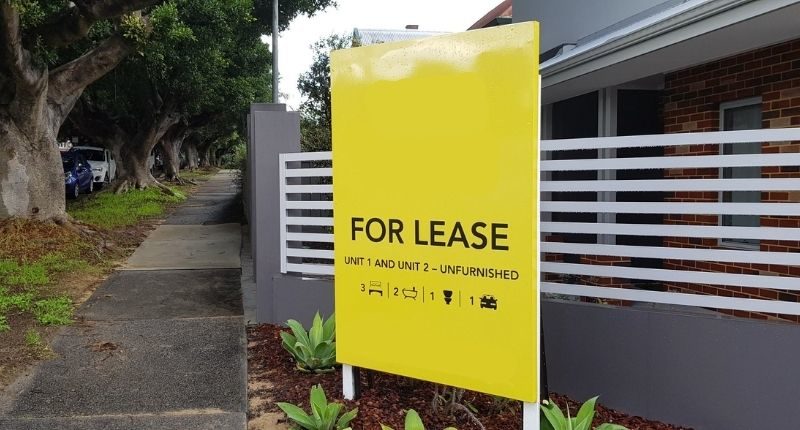
- The disincentivising of investors has driven down supply
- Political parties are suggesting an embarrassing lack of real solutions
- Governments should aim to provide 10 to 15% of rental housing
Ask those who know me, and most would say I’m not prone to emotional outbursts. Sure, half a bottle of red and a robust debate on sports cars or the world’s greatest guitar player will bring out my strident fervour, but I know my limits.
However, there’s one issue that’s come to the fore that I cannot stomach and I think it’s high time to deliver a verdict on exactly what’s wrong and how I’d fix it.
I am talking about the political idiocy in discussions surrounding Australia’s rental crisis.
Who started the fire?
I’ve been collating information and expert opinions from a range of reliable sources and there’s no doubt today’s rental crisis is founded on two pillars.
Politics
We’ve seen a comprehensive disincentivising of property investment by politicians across all jurisdictions.
There’s been an insane amount of states-based legislative change to tenancy laws and these amendments have been wholeheartedly weighted in favour of tenants.
Victoria introduced a raft of new rules in 2021 that included allowing tenants to modify the home and stricter terms around ending a tenancy.
New South Wales tenancy laws in 2020 restrict rent increases to one per year and allow for minor alterations by the tenant. Then there’s Queensland which is currently undergoing its first round of legislative changes with relaxations for tenants wanting pets and making modifications to the home as well.
While much of this may sound minor, it demonstrates a gradual erosion of a landlord’s control over their valuable asset.
But even worse is that some people think legislators should go further. During a historic rent crisis, tenants’ unions and minor-party members are pushing for even more rigorous changes to disenfranchise landlords.
In Queensland, for example, the Greens want to freeze rents for two years then only allow two per cent annual increases. They are effectively removing the free market from the equation and looking to “socialise” assets owned by mum-and-dad investors. Fortunately, and for now, the Labor party in Queensland has ruled out any such change.
Mind you, the Queensland government’s recent attempt to change land tax laws shows they’re not above bad policy themselves. The amendments, which would have seen investment property in other states and territories being used as part of Queensland’s land tax assessments, were diabolical.
Fortunately, because of political backlash and campaigning by investor advocates, the plan was shelved.
Yes, the vilification of investors has been relentless.
In the last two federal elections, they have been a supposed “soft target” for some politicians. It was perhaps Bill Shorten’s unrelenting attacks in 2019 that were the most divisive federally.
His platform of abolishing negative gearing and capital gains tax concessions was designed to curry favour with Labor’s base. He, however, grossly underestimated the aspirations of the voting public. Landlords (and those who hope to one day be a landlord) came out in force and kicked Mr Shorten to the kerb in the “unlosable election”.
Even so, the most recent federal election also saw minor parties attack investors – constantly painting them as greedy, property-hoarding multi-millionaires. But ABS numbers disprove this fallacy.
Of Australia’s 2.2 million investors, 85 per cent own two or less investment properties.
Put another way, the vast majority simply want a little extra income in their retirement.
Finance
Property investment requires its buyers to qualify for finance on reasonable terms, but that has become near impossible for many.
Findings from the Royal Commission into Banking and Finance resulted in tougher loan conditions for all borrowers, but none more so than investors.
Regulations were introduced to slow investor lending. Financiers applied a range of measures such as higher LVR thresholds and more rigorous and conservative financial assessment during the approval process.
And then there’s interest rates. Despite investors traditionally having far fewer defaults relative to owner-occupiers, banks continue to charge them higher interest rates.
Now they’re being hit with ongoing interest rate rises and increased serviceability buffers along with the rest of the public.
Buying a property and then finding the funds to hold it have become more and more challenging. It’s little wonder that investors have been fleeing the sector. Many saw the hot 2021 market as an opportunity to cash out, which has of course led to fewer rentals in the face of rising tenant demand.
So here we are. Investors have been battered, bruised and belted on all fronts. If I can put it bluntly, they’re sick of the bullshit and are walking away.
The fix
In my opinion there are two ways we can turn the market around and help all tenants find a home.
The first is to increase investment in government housing. Public housing accounts for around two to three percent of all rental stock at present. That’s a pittance of what’s needed.
Governments should instead be aiming to provide a minimum of 10 to 15% of rental housing. This would not only help secure affordable rentals for all Australians, but it’d also stimulate an array of industries across the economy from construction to general services.
The second move to end the rental crisis is simply this – stop belting investors and instead, start encouraging them. Favourable policies such as a reduced tax burden and financial incentives will incite participation.
At the very least, end all the anti-landlord rhetoric and policy implementation. All this does is encourage those with investable funds to find other ways they can grow their wealth outside of real estate.
Of course, being on the side of the investor is deemed politically unsavoury. Those in power are too afraid to say what must be said, which is that investors are a positive influence, not the big bad wolf they’re all too often painted to be.







